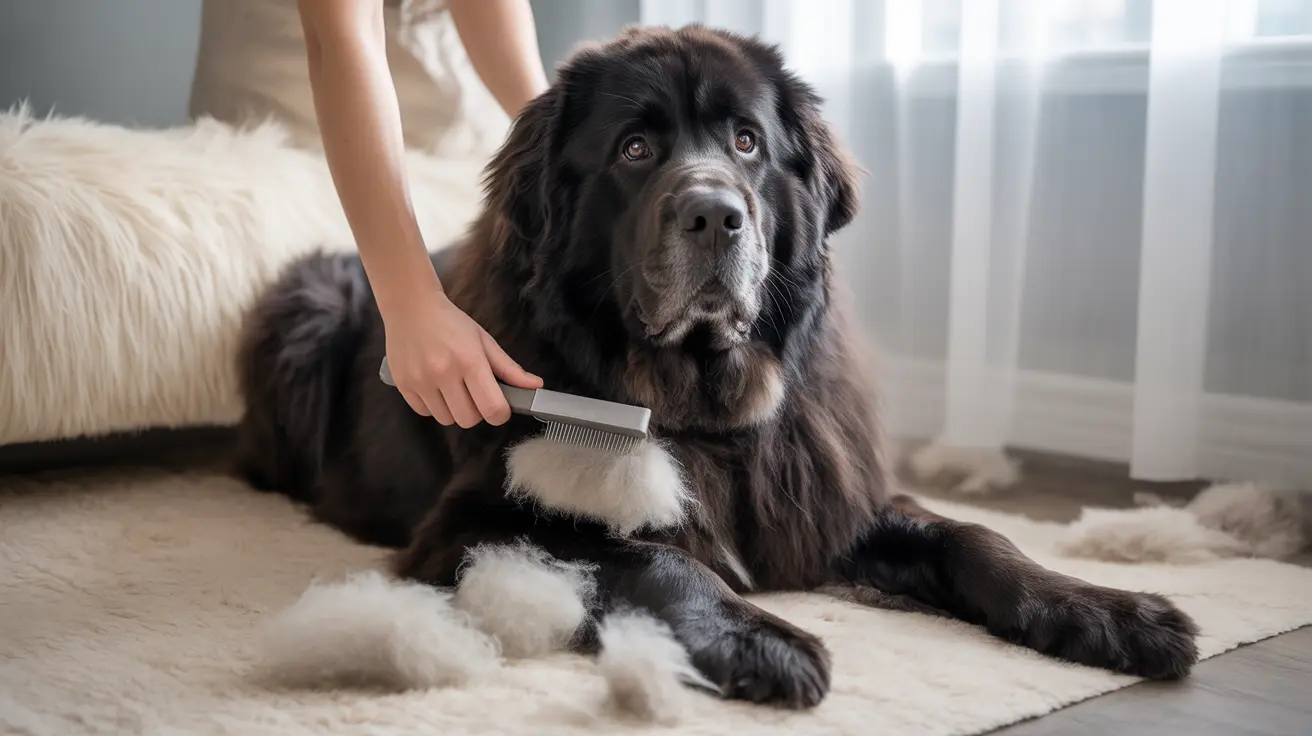If you're considering adding a Newfoundland to your family, understanding their shedding patterns and grooming requirements is essential. These gentle giants are known for their magnificent double coats, which serve important functions but also come with specific maintenance needs. Let's dive into everything you need to know about Newfoundland shedding and how to manage it effectively.
The short answer is yes, Newfoundlands do shed considerably. While they're classified as moderate shedders by breed standards, their large size means the actual volume of shed fur can be substantial. Understanding their shedding patterns and establishing proper grooming routines is crucial for maintaining both your dog's health and your home's cleanliness.
Understanding the Newfoundland's Double Coat
Newfoundlands possess a distinctive double coat consisting of a water-resistant outer layer and a soft, insulating undercoat. This combination historically helped them excel in water rescue operations and survive harsh weather conditions. The outer coat is coarse and straight, while the undercoat is dense and soft, providing essential protection against cold temperatures and water.
Seasonal Shedding Patterns
While Newfoundlands shed year-round, they experience two major shedding seasons annually - typically in spring and fall. During these periods, which last approximately 3-4 weeks, they "blow" their undercoat, resulting in significantly increased fur loss. This natural process helps them adapt to seasonal temperature changes.
Managing Daily Shedding
Even outside peak shedding seasons, Newfoundlands require regular grooming to manage their coat effectively. Daily brushing becomes especially important during shedding seasons, but weekly brushing is necessary year-round. Using appropriate tools like slicker brushes and undercoat rakes can help remove loose fur before it ends up around your home.
Essential Grooming Tools and Techniques
Successful coat management requires the right tools and approach:
- Long-bristled slicker brush
- Undercoat rake
- Wide-toothed metal comb
- Professional-grade dryer
- Dog-specific conditioning spray
These tools, when used regularly and correctly, help prevent matting and reduce the impact of shedding on your home environment.
Professional Grooming Requirements
While regular at-home maintenance is crucial, professional grooming every 6-8 weeks helps maintain optimal coat health. Professional groomers can:
- Thoroughly remove loose undercoat
- Check for and address any skin issues
- Perform proper bathing and drying techniques
- Trim nails and clean ears
- Provide guidance on home maintenance
Impact on Home Environment
Living with a Newfoundland means adapting to some level of fur in your environment. Practical strategies for managing this include:
- Regular vacuuming (often daily)
- Using washable furniture covers
- Installing good air filtration systems
- Keeping multiple lint rollers handy
- Establishing designated dog areas in the home
Frequently Asked Questions
Do Newfoundland dogs shed a lot throughout the year, and when is their heaviest shedding season?
Newfoundlands shed moderately throughout the year, with heavy shedding occurring during spring and fall. These seasonal shedding periods typically last 3-4 weeks and involve significant undercoat loss as the dog's coat adapts to temperature changes.
What grooming tools and techniques are best for managing Newfoundland shedding effectively?
The most effective tools include a slicker brush, undercoat rake, wide-toothed metal comb, and high-velocity dryer. Regular brushing sessions should focus on removing loose undercoat while maintaining the protective outer coat. Using a conditioning spray can help prevent breakage during brushing.
How often should I brush and bathe my Newfoundland to control shedding and keep their coat healthy?
Brush your Newfoundland at least weekly during regular periods and daily during shedding seasons. Bathing should occur every 6-8 weeks or as needed, using appropriate dog shampoos designed for double-coated breeds.
Can improper grooming cause mats or skin problems in Newfoundlands, and how can I prevent this?
Yes, inadequate grooming can lead to painful mats and skin issues. Prevent these problems through regular brushing, proper bathing techniques, and ensuring the coat is completely dry after bathing. Pay special attention to areas prone to matting, such as behind the ears and under the legs.
How does the Newfoundland's double coat affect shedding compared to other large dog breeds?
The Newfoundland's double coat sheds similarly to other double-coated breeds like Saint Bernards and Bernese Mountain Dogs. However, their larger size means more total fur volume. The water-resistant outer coat and insulating undercoat serve important functions and should never be shaved or clipped short.
Conclusion
While Newfoundlands do shed considerably, proper grooming routines and understanding of their coat care needs can make this manageable. The key is consistency in grooming, using the right tools, and maintaining regular professional grooming appointments. With proper care, your Newfoundland's magnificent coat can remain healthy while keeping your home reasonably fur-free.






